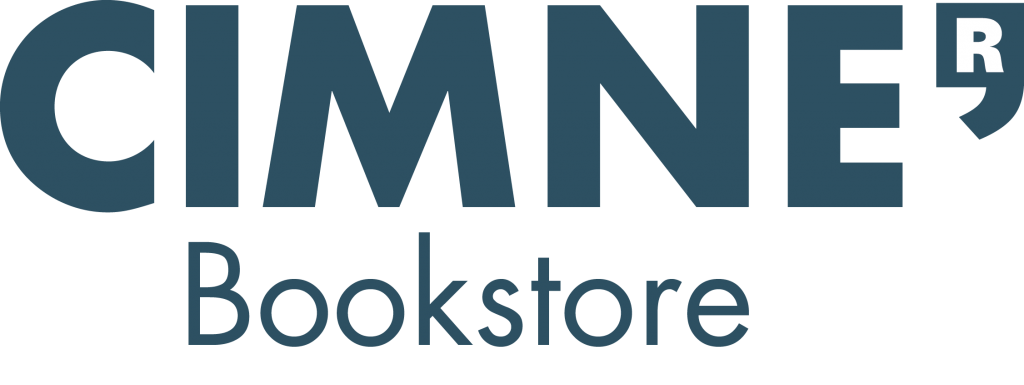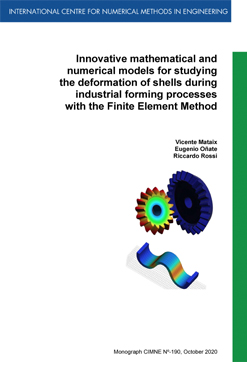Innovative mathematical and numerical models for studying the deformation of shells during industrial forming processes with the Finite Element Method
FREE!
Editorial: CIMNE
Year of publication: 2020
Pages: 374
Editorial: CIMNE
Year of publication: 2020
Pages: 374
Description
This document contains the result resulting from the work in the doctoral thesis Innovative mathematical
and numerical models for studying the deformation of shells during industrial forming processes with the
Finite Element Method. The objective of this thesis is to contribute to the development of finite element
methods for the analysis of the stamping processes, an area of problems with a very clear industrial
application. Indeed these kinds of problems involve multiple disciplines and require the understanding
of different mechanical problems, being the most relevant disciplines the continuous mechanics, the
plasticity, contact problems, among others, depending of the problematic of study.
To achieve the proposed goals, attention is focused in the first section of this thesis in the solid-shell
elements, which are an attractive kind of element for the simulation of forming processes. This is due to the
fact that any kind of generic 3D constitutive law can be employed without any kind of additional hypothesis,
besides the thermomechanic problem is formulated without additional assumptions. Additionally this type
of element allows the three-dimensional description of the deformable body, thus contact on both sides of
the element can be treated easily.
This work will present in first place the development of a triangular prism element as a solid-shell,
for the analysis of thin/thick shell, undergoing large deformations. The element is formulated in Total
Lagrangian (TL) formulation, and employs the neighbour (adjacent) elements to perform a local patch
to enrich the displacement field. In the original formulation a modified right CauchyGreen deformation
tensor (¯C) is obtained; in the present work, a modified deformation gradient (¯F) is obtained, which allows
to generalise the methodology and thanks to this we are able to employ the push-forward and pullback
concepts. The push-forward and pullback technique provide a mathematically consistent method for
define the time derivatives of the tensors; and for example it can be employed to work with elasto-plasticity.
The element is based in three modifications: (a) a classical assumed strain approach for transverse
shear strains (b) an assumed strain approach for the in-plane components using information from
neighbour elements and (c) an averaging of the volumetric strain over the element. The objective is to
use this type of element for the simulation of shells avoiding transverse shear locking, improving the
membrane behaviour of the in-plane triangle and to handle quasi-incompressible materials or materials
with isochoric plastic flow. The element considers just one Gauss point in the plane and a chosen number
of integration points along the axis, thanks to this it is possible to consider problems with a significant
non-linearity related to plasticity.
This work will continue presenting the contact formulation developed, which consists in state-of-art
of the numerical contact mechanics formulation for implicit simulations. Consisting in an exact mortar
integration of the contact interface, this allows to obtain the most consistent integration possible between
the integration domains, as well as the most exact solution possible. The implementation also considers
several optimisation algorithms, like the penalty constraint optimisation, but particularly remarkable
the consideration of a Augmented Lagrangian Method (ALM) with dual Lagrange multipliers, a new
contribution of this work. The latter allows to static condensate the system of equations, allowing to remove
the Lagrange Multiplier (LM) of the resolution and therefore permitting the consideration of iterative
solvers. Additionally, the formulation has been properly linearised, ensuring the quadratic convergence of
the problem. In order to solve the system of equations, a semi-smooth Newton method is considered,
consisting in an active set strategy, extensible also in the case of frictional problems. The formulation works
both for frictionless and frictional problems, the later essential for the simulation of forming processes.
This frictional formulation is framed in the traditional friction models, like the Coulomb friction, but the
development presented can be extended to any type of frictional model. This contact formulation is fully
compatible with the solid-shell introduced on this work.
Keywords: metal-forming, stamping, shells, solid-shells, contact, plasticity,adaptive remeshing
Additional information
| format | Monograph |
|---|---|
| Year of Publication | 2020 |

